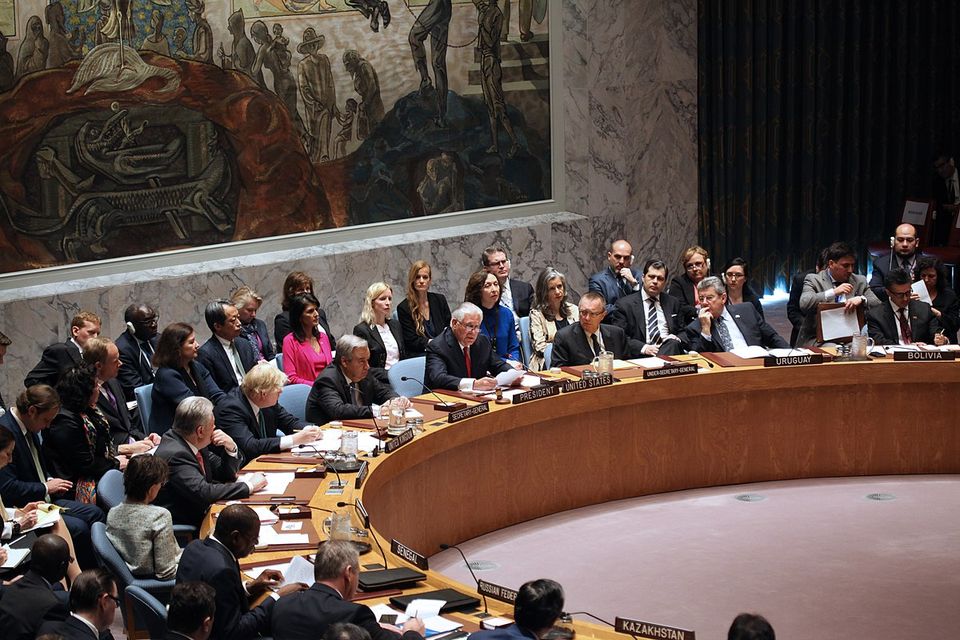
Three Lessons for the UN Security Council on the Ghouta Ceasefire
It is now clear that the ceasefire passed by the UN Security Council (UNSC) on February 24th has failed to put an end to the fighting in Syria or address the unfolding humanitarian catastrophe in Eastern Ghouta. An estimated 77 people were killed on Monday alone, and when an aid envoy finally entered Eastern Ghouta yesterday morning, it was first ransacked by government security forces, which removed 70 percent of the desperately needed medical aid. The reality of the Syrian government’s current military position makes any ceasefire challenging, but even under ideal circumstances the flaws in Resolution 2401 would make it difficult to implement. The text lacks key details and fails to place itself within the larger context of a political solution, reading as a reactive attempt at damage control rather than a thoughtful attempt at resolution. The following lessons from ceasefire agreements in previous conflicts provide useful comparisons:
- Terms should be clearly defined.
The most important aspect of a ceasefire is that it is clearly defined, a metric by which Resolution 2401 fails. First, a ceasefire must have a clear start date, whether that be a specific time or a triggering event. The current ceasefire agreement was intended to go into effect “without delay,” causing immediate confusion as to when the agreement would take effect, or if it already had.
Second, the parties need to be clearly specified. Resolution 2401 lists specific terrorist organizations that do not fall under the agreement, but also adds, “all other individuals, groups, undertakings and entities associated with Al Qaeda or ISIL, and other terrorist groups, as designated by the Security Council.” By including those “associated with” terrorist groups, the UNSC intentionally created a loophole which grants states broad discretion, allowing them to potentially target civilian areas under the guise of fighting terrorism, and giving cover not only for Syrian and Russian attacks on Eastern Ghouta, but also for Turkey’s offense on Afrin and US operations in the east. Ideally, a ceasefire should not only name excluded groups, but point to specific operations and geographic areas where continued hostilities are permitted, to eliminate any ambiguity.
Finally, an agreement should clearly stipulate the criteria for a ceasefire violation. Are warring parties allowed to use the ceasefire to regroup and rearm? Will there be a halt to civilian detentions? By allowing for broad interpretations of several ceasefire terms, the UN resolution is susceptible to disagreements and increased distrust.
2. A detailed monitoring system should be in place
In order for a ceasefire to be effective, parties need to be confident that other parties will also honor it. Through a detailed monitoring mechanism, an agreement can enshrine trust-building measures where there is otherwise no trust among the parties. Monitoring can take many forms, but the agreement must specify who is authorized to monitor, their exact responsibilities, their relationship to each other, their access to relevant sites, and the obligation of fighters to assist them in their duties. A monitoring mechanism can rely upon reporting from the warring parties themselves, international organizations, and civil society, and SJAC has written previously about the importance of civil society involvement in monitoring ceasefires.
The only reference to monitoring in the UN resolution is that monitoring, conducted by the signed states, should be “building on existing agreements.” Given the weak monitoring provisions in past agreements, the international guarantors have squandered another opportunity to build the foundation for a substantial monitoring system, with local buy-in, that could eventually be adapted for a more durable peace.
3. A temporary ceasefire should build towards long-term goals
Ceasefires can have a variety of different goals, from brief pauses in fighting, to a permanent end to conflict. In the case of resolution 2401, it is clear that the goal is a thirty-day humanitarian pause. At this stage in the conflict, a short-term pause is reasonable and certainly necessary.
Even short-term agreements should be seen as an opportunity to build trust between parties and create the groundwork for future negotiations. Overtime, the process of working together to craft ceasefires, even when they ultimately fail, allows parties to understand each other’s goals and red lines, and change their calculations about the strategic value of violence. Research has shown that the number of previous ceasefires is one of the best predictors for successfully ending a conflict.
However, by failing to work directly with the Special Envoy, local actors and civil society to craft a ceasefire that complements the framework of political negotiations, the UNSC is not taking advantage of this opportunity to build relationships among parties that will ultimately be key to a negotiated settlement. Instead, the UNSC has undermined its authority in the eyes of Syrians and eroded any belief that a negotiated peace is possible. As Ghanem Tayara, chairman of the Union of Medical and Relief Organizations stated, “I am embarrassed for the UN security council, the mightiest nations on the planet cannot enforce the most basic standards of human rights and decency.”
The need for an immediate ceasefire in Syria is clear, and the UNSC’s sense of urgency is appropriate. However, if it is to succeed in temporarily changing the situation on the ground, let alone securing long-term peace, the United Nations needs to be more thoughtful when crafting such agreements. Every time the UNSC passes another toothless resolution, it further undermines hope for a negotiated solution, as well as its own authority as a potential mediator.
For more information or to provide feedback, please post a comment below or contact SJAC at [email protected].